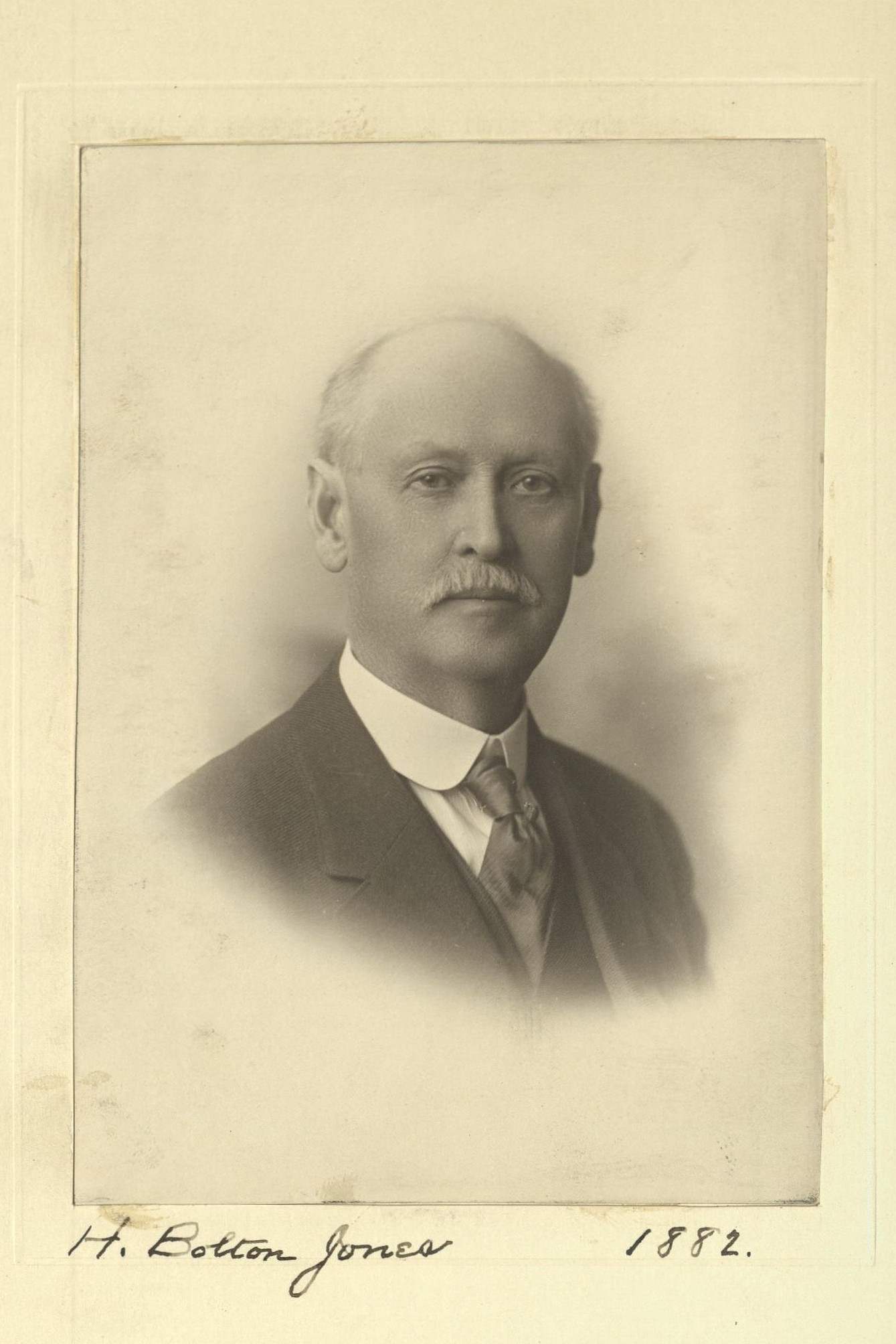Artist
Centurion, 1882–1927
Born 20 October 1848 in Baltimore, Maryland
Died 24 September 1927 in New York (Manhattan), New York
Buried Green Mount Cemetery , Baltimore, Maryland
, Baltimore, Maryland
Proposed by William H. Thomson and John G. Brown
Elected 4 March 1882 at age thirty-three
Archivist’s Note: Brother of Francis C. Jones
Proposer of:
Century Memorial
The artist group of a Saturday evening at the Club was never quite complete unless Hugh Bolton Jones was in the centre of it, and that was not because his ideas and impressions directed the conversation. Strong convictions Jones certainly possessed, and they were not apt to be shaken; but in the talk of the evening he was usually the sympathetic listener. Real and intelligent interest in what others had to say, kindly tolerance for judgments which he did not share, and that indefinable charm of a likable personality, always drew out the best of those who talked while Bolton Jones listened. His mere companionship, one of his most eminent fellow-artists and fellow-Centurions once said, was a tonic to tired nerves. The world is better for his having lived in it, was the frank judgment of another.
Jones’s paintings reflected his personality as truly as his conversation did; his friendliness for Nature seemed to be met by Nature’s display of herself for his artistic eye in her kindliest mood. It was very seldom that he composed a picture in his studio; he found his subjects out of doors, and painted his landscapes with very real intimacy of contact. It was often said of him that he understood better than any draftsman of his time the character of trees, and certainly they rustle and whisper on his canvases. But he had learned their secrets long before, through constant observation and hundreds of minute drawings of them in his younger days. As such artistic background would imply, there was no appeal to Bolton Jones in the startling or spectacular. The cult of the bizarre was entirely distasteful; the longer he painted his favorite Berkshire country-sides, the more truly realistic they became. How real his landscapes were, there was one bit of curious war-time testimony. When the Expeditionary Force was organizing, the War Department came to Jones and his brother [Francis C. Jones] for a set of large paintings of typical French scenery well known to them, and the pictures were employed for instructing the artillery and infantry in the problems of terrain which they would have to meet in action. But his realism was always coupled with a sense of beauty and tender imagination. He painted the things that he knew, and the judgment of a very well-known critic and fellow-artist, that “Bolton Jones never painted a bad picture,” summarized the achievement of this gentle life.
Alexander Dana Noyes
1928 Century Association Yearbook

